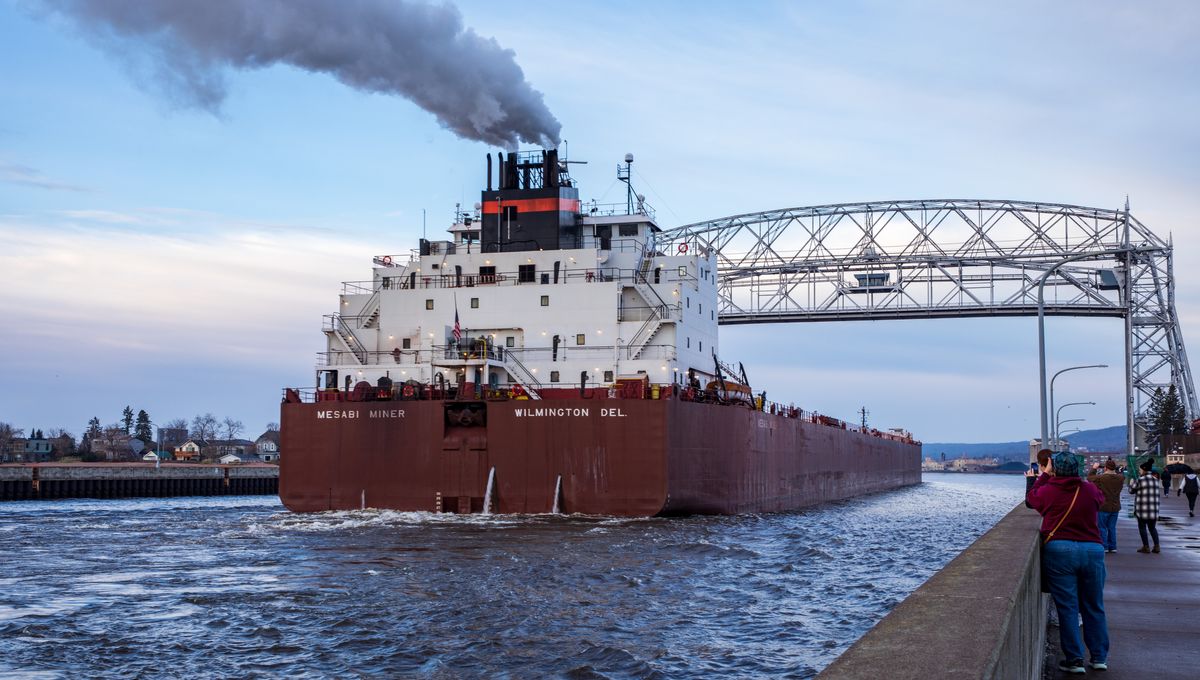
If you thought oceangoing ships could only go so far as the coast, the Port of Duluth-Superior is about to prove you wrong. Situated a whopping 3,700 kilometers (2,342 miles) away from the Atlantic Ocean, it’s the farthest inland port in North America to serve oceangoing ships – and that’s not the only thing that’s impressive about it.
I’ve a feeling we’re not in the Atlantic anymore
ADVERTISEMENT GO AD FREE
The Port of Duluth-Superior is located in Minnesota, on the westernmost tip of Lake Superior – the largest freshwater lake in the world (by surface area, at least) – and consists of 79 kilometers (49 miles) of harbor frontage, which sees nearly 800 vessel visits each year.
According to the port authority, it moves an average of 35 million tons of cargo each year, making it the largest dry bulk port in the Great Lakes and 19th largest in the US. Over half of the cargo handled at the port consists of iron ore, usually being moved out of the US, but inbound ships also carry cargo like limestone and cement.
There’s also a limit to the size of the ships that can carry such cargo to the port – not because of its capacity, but because they otherwise won’t be able to get through the locks leading up to it. In order to travel through the 15 Seaway locks, for example, ships can be no longer than 222.5 meters (740 feet), with a draft no bigger than 8.08 meters (26.5 feet) and beam, 23.7 meters (78 feet).
The Great Lakes-St Lawrence Seaway
The restrictions on ships were once even smaller – that is, until the creation of the Great Lakes-St Lawrence Seaway. “Without the opening of the St. Lawrence Seaway, the Port of Duluth-Superior would not be the world port that it is,” Jayson Hron, spokesperson for the port authority, told the Star Tribune.
While the Seaway stretches into both the US and Canada, its waters have existed as a trade route long before the countries did. Fast forward to 1871, and Duluth officially opened as a port, but it wasn’t until the 20th century that the system became the marvel of engineering that it is today.
Beginning in 1954, around 22,000 people worked for five years to build seven locks between Montreal and Lake Ontario, moving over 160 million cubic meters of earth and rock and pouring over 4.6 million cubic meters of concrete in order to do so.
ADVERTISEMENT GO AD FREE
This completed the Great Lakes-St Lawrence Seaway System – the other section, the Welland Canal, had been restored in 1932 – opening up the Port of Duluth-Superior to deep-draft oceangoing ships for the very first time and cementing its status as North America’s farthest inland seaport.
Source Link: North America’s Farthest Inland Seaport Is 3,700 Kilometers Away From The Atlantic